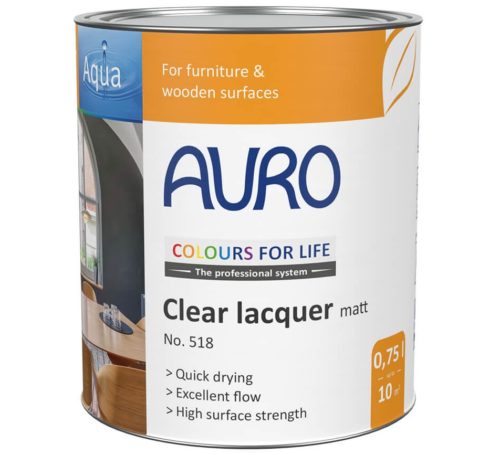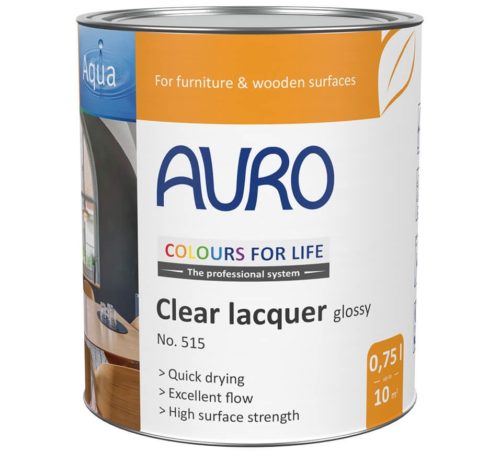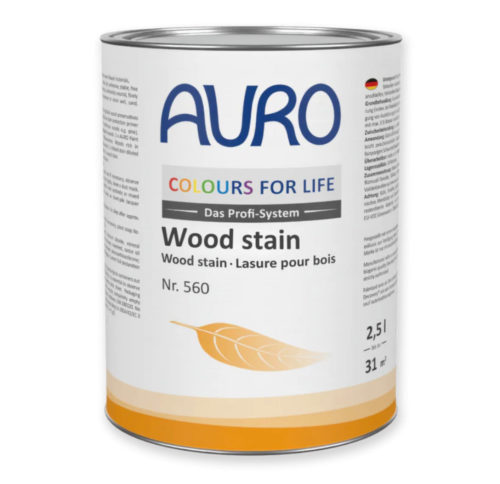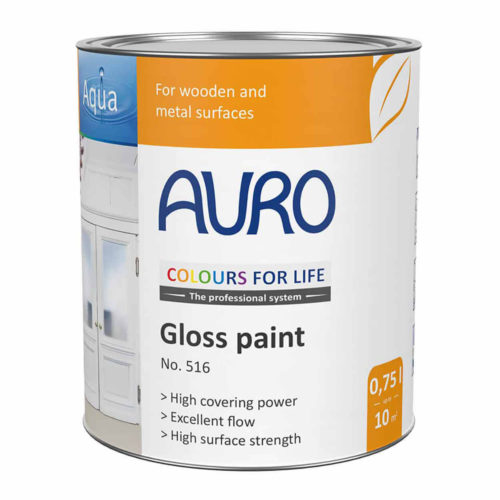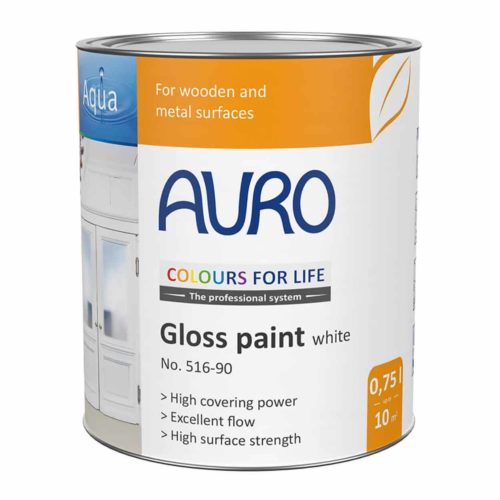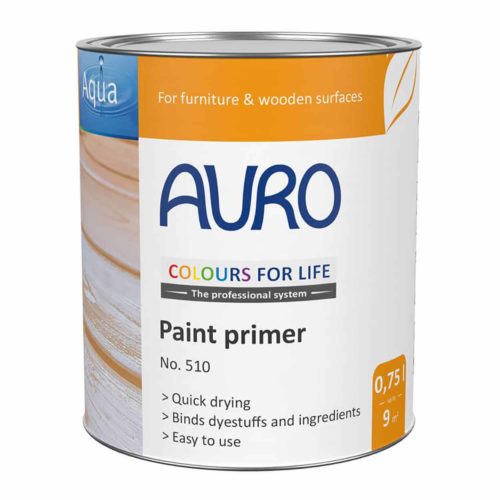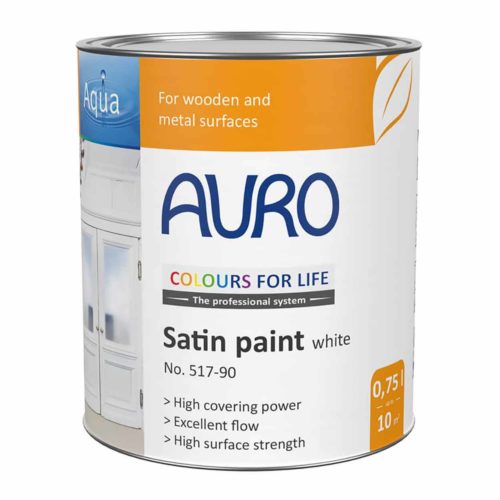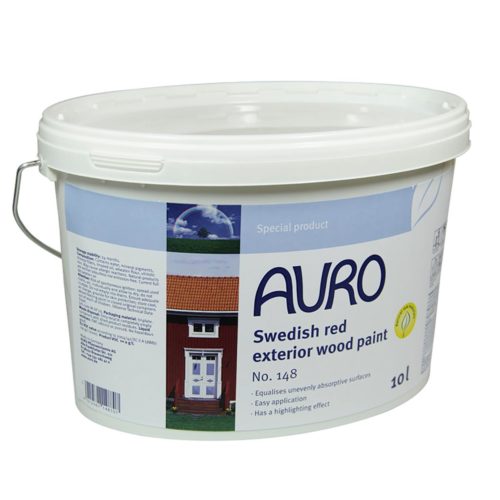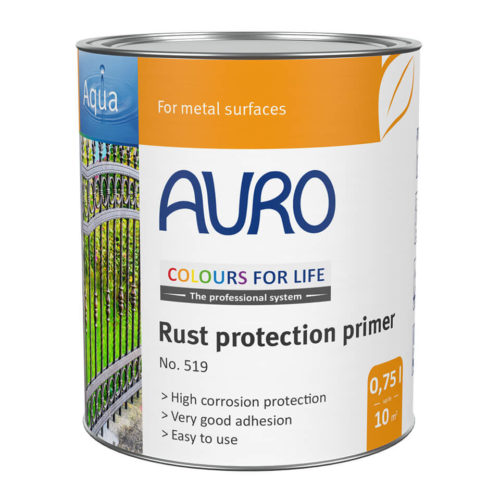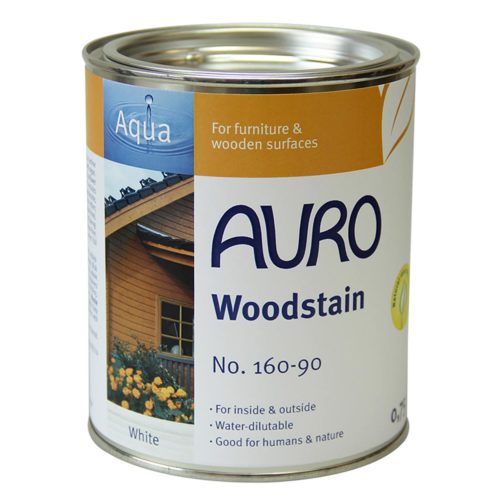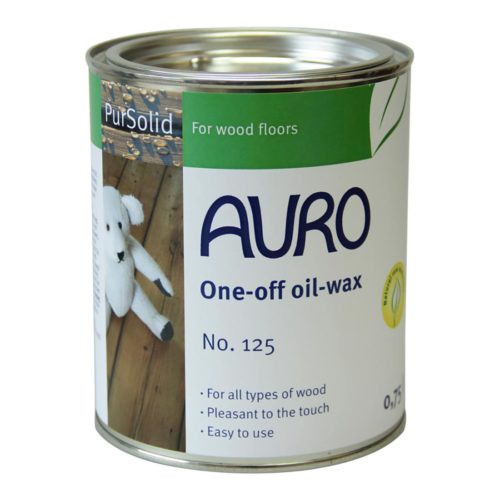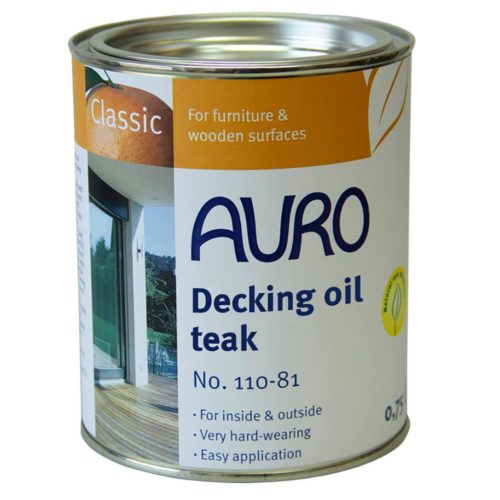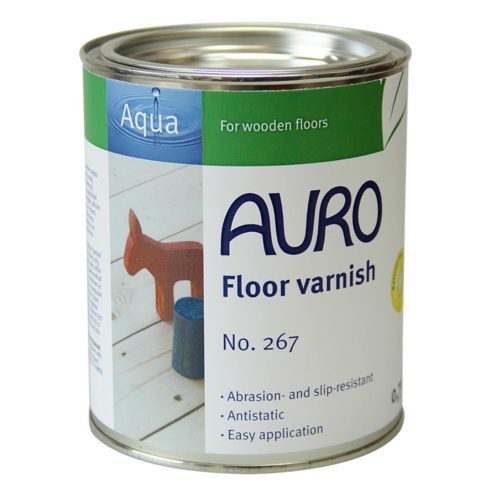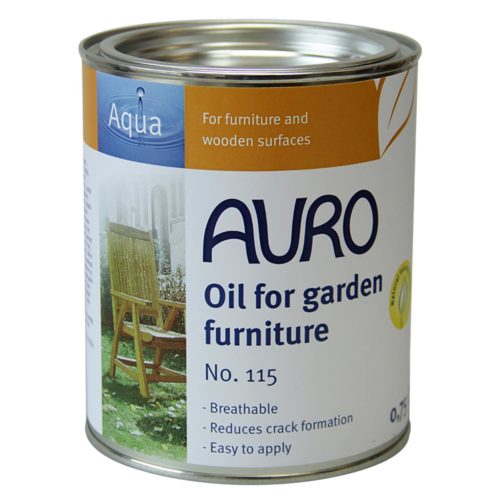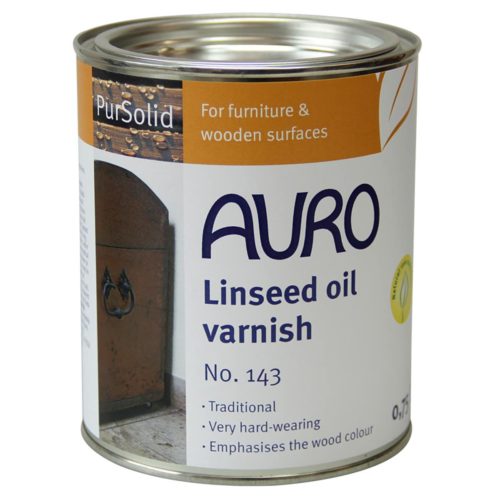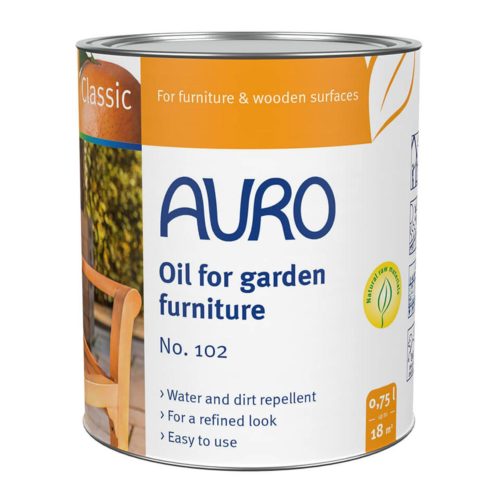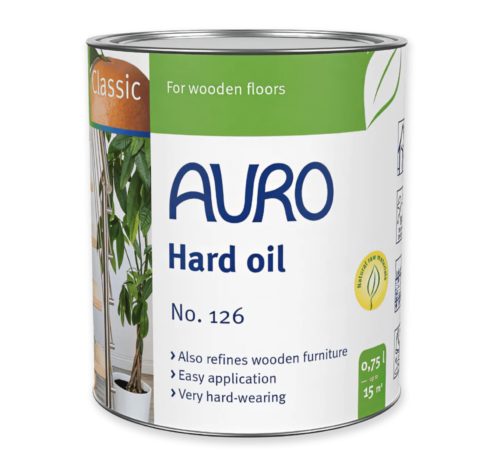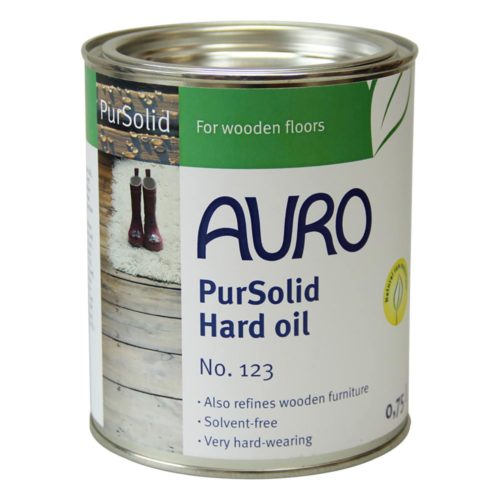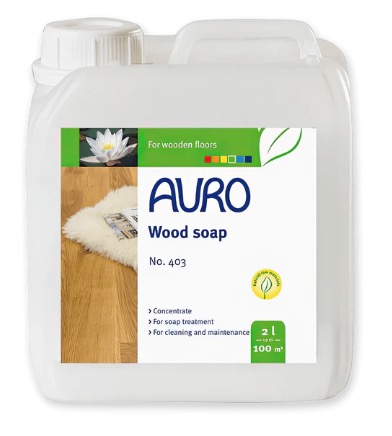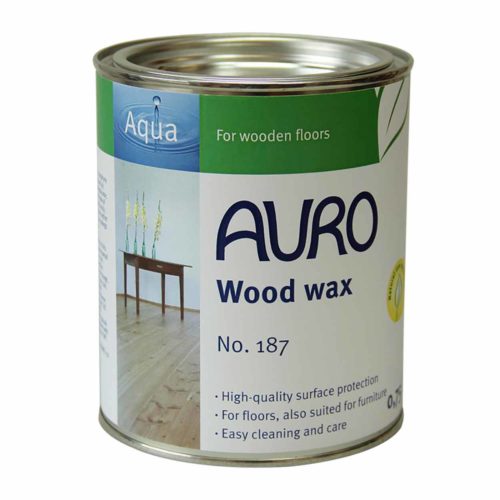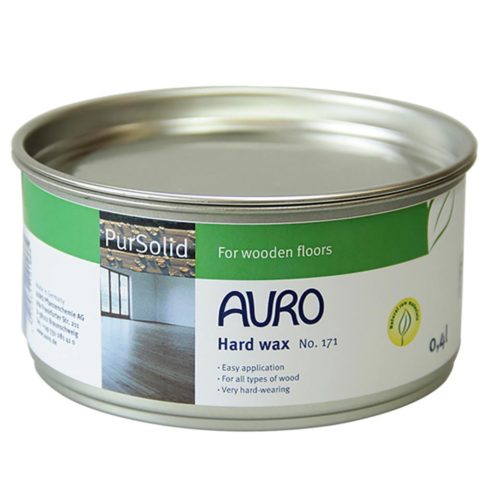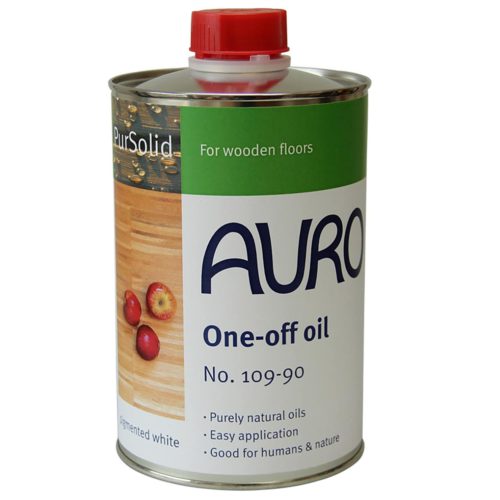It is so important that you use the right paint if you have lime plaster walls, and we can help guide you for what you need, how to do it, and how to improve your overall indoor air quality. If you are new to lime plasters and want to know the difference between lime plasters and gypsum standard plasters please click here.
When you have lime based plasters, you need to choose a paint that is actually breathable, not just ‘greenwashed’ breathable that you see on almost all plastic paints these days also. Plastic paints are not breathable, not even slightly. Lime plasters need to be able to breathe, so it is important that you have a tested breathable paint for lime plaster, whether it is a natural mineral based paint (that is suitable for painting over lime) or a true (made from lime) breathable lime paint.
If you want something to replace a limewash, then use Graphenstone Biosphere. The easiest paint to use, with most colours is Graphenstone Grafclean, which can be used in the rest of the house over normal plaster / normal paint as well as lime plasters / lime paints.
We stock a few different types of breathable paint for lime plasters, which I will discuss further below.
| Base | Suitable for Lime | Over ‘normal’ paint? | Washable | Colours | Link | |
| Graphenstone Grafclean Interior (Matt) | Mineral | YES | YES | YES | Full Range | BUY |
| Graphenstone Grafclean Exterior (Matt) | Mineral | YES | YES | YES | Most of range | BUY |
| Graphenstone Grafclean Eggshell (Int & Ext) | Mineral | YES | YES | YES | Full Range | BUY |
| Graphenstone Ecosphere (Interior) | Lime | YES | With primer | NO | White / Off Whites | BUY |
| Graphenstone Biosphere (Exterior) | Lime | YES | With primer | NO | White / Off Whites | BUY |
| Graphenstone GCS Interior | Mineral | YES | With primer | NO | Most of range | BUY |
| Graphenstone GCS Exterior | Mineral | YES | With primer | NO | Most of range | BUY |
| Auro 344 Lime Paint (Int & Ext) | Lime | YES | NO | White only | BUY |
Buy Breathable Paints for Lime Plasters
-
Product on sale
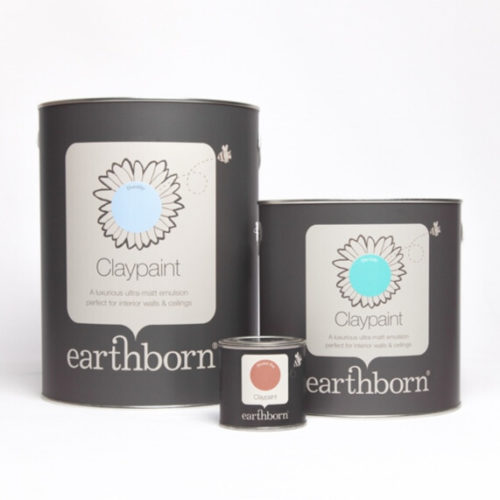 Earthborn Clay Paint – Breathable Ultra MattPrice range: £5.40 through £89.00 Inc VAT
Earthborn Clay Paint – Breathable Ultra MattPrice range: £5.40 through £89.00 Inc VAT -
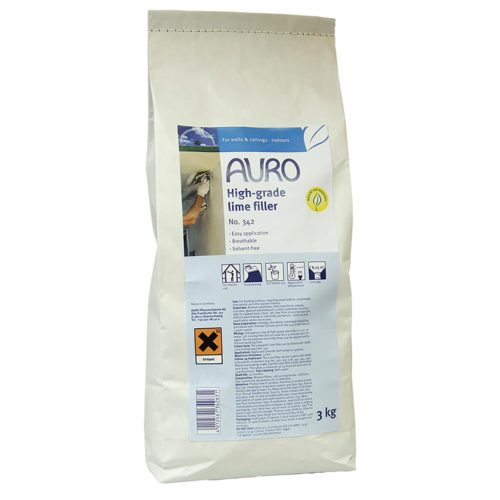 Natural Lime Filler – High Grade Lime Filler – Auro 342Price range: £47.00 through £165.00 Inc VAT
Natural Lime Filler – High Grade Lime Filler – Auro 342Price range: £47.00 through £165.00 Inc VAT -
 Lime Paint – High Grade Eco & Natural Breathable Lime Paint – Auro 344Price range: £65.00 through £120.00 Inc VAT
Lime Paint – High Grade Eco & Natural Breathable Lime Paint – Auro 344Price range: £65.00 through £120.00 Inc VAT -
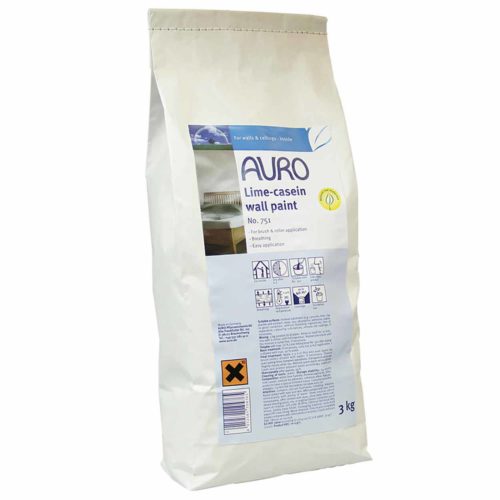 Natural Lime Casein Wall Paint – Auro 751£45.00 Inc VAT
Natural Lime Casein Wall Paint – Auro 751£45.00 Inc VAT -
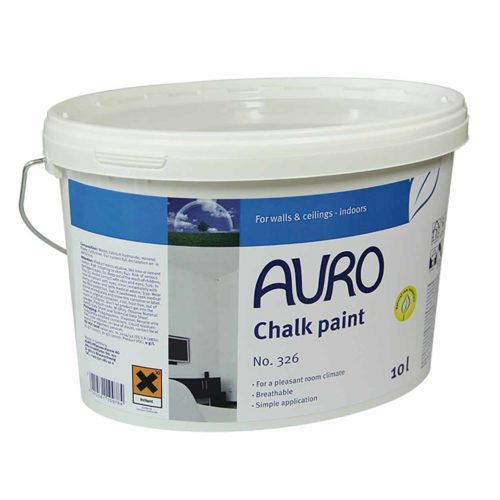 Natural Chalk Paint – Lime & Mineral Interior Wall Paint Auro 326Price range: £5.00 through £85.00 Inc VAT
Natural Chalk Paint – Lime & Mineral Interior Wall Paint Auro 326Price range: £5.00 through £85.00 Inc VAT
Table of Contents
- Lime plasters need vapour permeable paints
- SD value explained for breathable paints
- Can I use any type of paint for lime plaster?
- Painting New Plaster – How do I paint on new plaster?
- Common Questions about painting on lime plaster
Lime plasters need vapour permeable paints
Lime plasters need vapour permeable paints which allow moisture to easily pass through without becoming trapped behind surfaces of impermeability, such as a modern plastic paint or damp barrier, or even plastic insulation.
SD value for breathable paints
Breathable paints are measured by an index of SD value, for instance an SD (steam diffusion) value of 0.01 – 0.05 shows that the moisture needs to travel 1-5 cm to escape.
An SD value of 1 means that vapour needs to travel 1 meter to escape the surface, so 100 times further than a paint with the value of 0.01. If you don’t see the SD value of the paint you are looking at, avoid.
There is currently no regulation for the word ‘breathable’ in relation to paints, so be cautious. More on breathable paints here.
Can I use any type of paint for lime plaster?
Most paint found at your local store just won’t be suitable for lime plasters. ‘Normal paints’ contain plastics and chemicals, which form an impermeable layer that water vapour just can’t get through. Avoid at all costs.
There are lots of paints available for both lime, gypsum and other types of walls, but the difference is not only the composition, IE which chemicals, binders, minerals they contain, but also the breathability. There is a lot of greenwashing around breathability, so in doubt always check the SD value for each paint (lower than 1 is essential)
There are many types of paints made for older houses, lime plasters and older substrates, and the common paints you will come across are
Lime Paints: Lime based, breathable and suitable for lime plasters.
Clay Paints: Both chemical based and natural versions exists, be careful of greenwashing. Usually very flat matt finish. Usually fairly durable.
Distemper: Very old fashioned paint dating back many years, which is a natural mix of chalk, pigment, water with a natural binder such as animal glue.
Mineral paints: Modern natural style paints, containing a mineral base and generally strong and tough. Many types are available, with and without chemicals.
Limewash – Built up of thin coats of lime and water, acting as a sacrificial layer to protect friable brickwork. Great option, but more care and time needed. Read more about limewash here.
Painting New Plaster – How do I paint on new plaster?
If you’ve just had a room plastered and you’re itching to start painting, then read on. This handy guide to painting new plaster will help you avoid the pitfalls and get the immaculate finish you want.
First off, let’s deal with a myth. Many people believe that applying a layer of diluted PVA glue to seal the ‘plaster’ is a must, but professional plasterers and decorators agree that this is a waste of time. It can even lead to a poor paint finish if there are any lumps or inconsistencies in the PVA. We follow the professionals in recommending that you apply our paints directly to the plaster wall. Many conventional and most breathable paints and natural and / or organic paints need to have a first special first layer applied called a ‘mist coat,’ made up of paint diluted with water. This helps the top coat to bind with the plaster, but it’s time consuming and messy.
Common Questions about painting on lime plaster
For most normal painting jobs, where you just need a quality easy to use house paint, that works as well as a modern acrylic, we have a few options for you – but by far the easiest (and top selling) is to use this natural paint here. Available in great colours, tough and washable. Once the plaster has properly dried (usually about 4 weeks) then water thin the paint with around 20% water, and use this as the ‘mist coat’ – this will enable good absorption and adherence to the plaster. After 2-4hours, then you can paint the first of your 2 coats of top coat. Again, just use the same paint – this natural paint Graphenstone Premium would be a great choice.
When choosing a paint for lime plaster breathability is the key. Just one square yard of 5mm-thick lime plaster can contain up to half a litre of water. It can take over six months for the plaster to fully dry, but, if your paint is porous and breathable such as Graphenstone Ecosphere then you can paint much earlier, as the water vapour isn’t sealed in. Have a look at our natural lime paint range for more options. You can still use the Graphenstone Premium over lime, and have access to brighter colours. With all our paints, water thin by 20% to act as the mist coat onto bare plaster.
If you’re painting lime plaster, it’s once again the best choice, as it is both fully breathable and emission-free, meaning there’s no risk of a reaction between the chemicals in the paint and the drying plaster. Once you’ve chosen your paint, make sure you pick the right tools for the job. Since new plaster is a smooth, low-friction surface, a cheap or dilapidated roller can slip and cause an uneven finish. As you’re applying the first coat, you may notice slight blemishes or bumps which weren’t apparent on the raw plaster. If you do find any unsightly ridges or lumps, don’t panic. These can be sanded down with fine sandpaper (make sure you wrap the sandpaper round a plane surface to ensure you get a flush finish), and immediately painted over. If you find any gaps or recesses, these can be filled with wall filler, sanded, then touched up with paint.
No, just water thin the top coat, such as Graphenstone grafclean by 20% – and use this as the mist coat. Once this has dried, then you can use the top emulsion coat as normal.
As above, no, just water thin the top coat, such as Graphenstone grafclean by 20% – and use this as the mist coat. Once this has dried, then you can use the top emulsion coat as normal.
Ideally we suggest using a lime paint over a lime plaster, but to be honest the Graphenstone Grafclean (mineral based) is also very good.
So there you have it: If you’re planning on painting over new plaster, don’t PVA, make sure you save yourself time and effort by using a paint which doesn’t need this solution, and make sure you have the right tools for the job.
How to get paint out of your carpet
Ever been stuck with a stubborn paint spot or stain that won’t come off no matter what you do? Paints are meant to stick to surfaces and not come off easily. This however, does not mean that your carpet is ruined forever. With some effective tips listed below you could remove those difficult paint stains and save your carpet!
IMPORTANT: Always test an area first before doing it on your main area of carpet!
Just water and a little detergent if needed – same as all water based paints. It will dry very hard though so get to it quickly!
There are many ways to remove paint from your carpet, have a look below at our suggestions!
Using Household Ammonia to remove house paint
- Make sure that you are working in an open space to remove the stain as the smell of
- removing agents or of the paint could be dangerous.
- You can either use a bowl or a spray bottle if you have that available to put hot water along with some household ammonia. Make sure that you get a good quality household ammonia. Mix these two well before applying on the carpet surface. Always try a small area first to make sure there is no issue!
- Gently use a scrubbing brush on the surface making sure that the ammonia mixture covers the total area where the damage is done. You don’t want to ruin your carpet strands by being harsh with the scrubbing brush.
- Take an extra piece of cloth that you can find and press it on the surface to remove the paint from the carpet. If you rub this cloth on your carpet, chances are that you will end up spreading more paint than actually removing it.
- After an adequate amount of paint can be seen on the piece of cloth, take a damp towel pressing it with both hands on the area.
- If the stain still does not budge, place a clean piece of cloth on the carpet. Now place a steam iron over it for almost 20 minutes repeating the process with a fresh piece of cloth until you see the desired results.
Diluted Dish Soap to remove house paint
- If the Ammonia does not seem to work on your carpet stain, take your regular dish soap and dilute it.
- After diluting it, spread it over the carpet with stain.
- Now take a damp towel and start pressing on to it with your hands or feet. This will help absorb all the water that the woolen fibre has absorbed.
Removing dried paint:
- Dried paint is far more difficult to deal with than fresh paint on carpet. The bits of paint that you can see on the carpet need to be removed first so you can move to the stain.
- Soak that area with hot water which will reduce the adhesion property of paint.
- You can now add dish soap in hot water and repeat the same steps that are described in the diluted dish soap method.
These are all the quick methods which you can try by using the products at home. However, if all else fails and the stain does not come off you might need to look for commercial cleaners. This is such a common mishap and you can follow these steps to get a clean carpet back!
How to paint a wall. Painting may seem like an easy task and it is to a certain extent but if you’re not careful then it can get messy and the wall may not get painted properly. In addition to this, personal safety is also important since paints can contain some toxic constituents and that is why we recommend non-toxic, environmentally friendly paints like these to paint your rooms.
Here is a simple guide to painting a wall whether it is inside or outside the house. This will help ensure that you have the proper tools and things don’t get messy.
Planning your approach before you start painting
The first step to painting a wall is planning your approach. You are not going to just pick up a brush and start painting. You need to plan your approach based on whether the wall is inside or outside the house and the variables this changes. Moreover, color, shades and contrasts with the surrounding should also be kept in mind.
Selecting the colour
Keep in mind the contrast or color the other walls and the surroundings.
Picking out the tools
For every painting project different tools are needed depending on the requirements of the wall. Some important tools needed for every painting project are as follows:
- Paint (Try these natural modern wall paint)
- Paint brush
- Paint roller
- Paint roller extension rod
- Paint tray
- Putty knife
- Sand paper
- Primer (Natural primers can be found here)
- Drop cloth
- Painter’s tape
Prepping the wall
Empty the room before you start painting.. Use tarps and drop cloth to cover the floors. Use painter’s tape to cover door knobs, windowsills and the ceiling perimeter. Remove drapes from the windows and other decoration pieces in the room. If the wall is outside the house then remove any decorations on the wall.
The next step is to clean the walls from dirt and debris because paint would not adhere strongly to the walls if they are unclean. Similarly if walls have cracks or holes then they need to be repaired with acrylic caulk and a putty knife. Once it dries, sand it with fine sandpaper.
Similarly for walls outside the house, pressure wash the wall to remove dirt and debris. Repair all the damaged surfaces on the wall, remove all the loose paints. Cover all the doors, windows and lights using drop cloth or tarp before starting.
Another important thing is to remove mold from the walls before staring since painting over a mould can amplify the problem.
Applying primer
Primer is designed to supply a stable surface on which subsequent layers of paint can strongly adhere. In addition to this, primer can also help to hide the stains. In case of the surface being porous, the paint gets absorbed into the pores, so more layers of paint are required before it can develop a protective coating
Similarly if the surface is too glossy, color coat adhesion is difficult because the paint cannot lock onto the surface. Primer helps with that situation too.
If you are using Graf Clean paint then to prepare the primer layer, add 10% water to the paint to make a thinned paint mixture. Apply one coat of the primer to the walls and the ceiling using a paint brush or roller and let it dry completely.
Painting the first coat
Now it is time to paint the wall. Pour the Graf Clean Premium paint onto the paint tray and coat the roller properly with paint. Now start painting the walls by using the roller.
In case of a ceiling, it should be painted widthwise in 6ft square sections. Move from left to right, spreading the paint evenly in horizontal strokes. While moving from one square to another, make sure to feather or roll lightly at the edges of the square so that the layers do not overlap. This helps to ensure even coverage. Once you are done with the ceiling, apply the same method to the walls. Roll on the walls in vertical squares.
To prevent paint from drying unevenly, try to not stop in the middle of the process. Touch up any missed spots while the paint is still wet to ensure even sheen.
In case of an outside wall, fill the paint sprayer with exterior paint and then start coating the wall. Depending on the hue, apply one to two coats of wall. Work your way from top of the wall to the bottom in a smooth controlled manner, overlapping each stroke by 8 inches.
Apply wall brushwork
Now after rolling, use brush dipped in paint to do brushwork in areas that cannot be reached by rollers. This includes the edges and corners of the walls and edges between walls and the ceilings, the area around hinges and near the molds.
Painting the second coat
Let the first coat dry for at least 2 to 4 hours. Afterwards start painting a second coat for better finish repeating the same process as for the first coat. The longer you let the first coat dry, the better your results will be.
Cleaning up after yourself!
After you are done with painting your wall, it is time to clean up after yourselves. Clean up all the supplies, paint brushes, rollers and paint tray and store them at a dry place. Remove the tarps and drop clothes from the floor and furniture. Remove painter’s tape from door hinges and windowsills at a 45 degree angle to avoid removing any fresh paint.
What is a primer and what is it for? A primer (Petrochemical or Natural) is a special paint that is applied to the desired surface before any other layers of paint to improve adhesion. In other words, it ‘primes’ the surface to receive further layers of paint. Primers can be used on a variety of different surfaces including metal, wood, drywall, and concrete. Primers are engineered to improve the filling and binding properties of the material underneath it. This can be achieved through the chemical properties of the primer, but more often is achieved through controlling the physical properties of the primer i.e. porosity, hygroscopy, and tackiness. A off the shelf big brand primer usually consists of 20–30% synthetic resin, 60–80% solvent, and 2–5% additive agent. Some primers contain polyethylene (plastic), for better durability. There are now much better natural primers which offer all the benefits, but without the nasty drawbacks and chemicals.
Have a look at this range of modern natural primers.
Why Use a Primer Before Paint?
Primers ensure that the painting surface has an ideal, uniform texture. This allows for even coatings of paint layers on top and improves adhesion to the surface. This prevents the formation of defects on the surface of the paint, such as cracking, molding, and flaking, leading to a proper, finished look.
When to Use a Primer?
In practice, a primer is often used when painting porous materials, including concrete and wood. In fact, if the material is not water-resistant and is likely to come into frequent contact with water, using a primer is a must. Even if a primer is not necessary, it can help to combat mold and moisture in other surfaces. Always prime if you’re painting a lighter color over a darker one. Eggshell and semi-gloss paints in particular require a coat of primer as they often absorb unevenly. Additionally, primers may be used when changing paint types between layers to enhance durability.
Types of Primers
There are four basic types of primers: oil-based, latex, pigmented shellac primer and of course natural primer. Each primer has use-cases where it performs the best and other cases where a different type of primer may be more suitable.
Oil based primers
Oil-based primers are a tried and tested industry standard. They are used on a wide variety of surfaces such as wood, metals, and on top of existing paint layers. They impart stain resistance properties to the surface and slow down peeling, cracking, and blistering. They fill the porous surface of various materials, especially wood, which enables a smooth coating and fewer chances of defects.
On the other hand, Oil-based primers often contain Volatile Organic Compounds (VOCs) which can be detrimental to health and the environment. They take a long time to dry and also require rigorous cleaning to be removed from brushes.
Latex based primers
The Latex primers are water-based alternatives to oil-based primers. They are more flexible and fast drying, and are less brittle than oil-based primers, making them less susceptible to peeling and cracking. They are often used to prime soft-wood, galvanized metal, and drywall. Since they are water-soluble, they can be cleaned easily. Mostly chemical based with high VOCs.
Shellac based primers
Shellac primers have good stain-blocking capabilities. They can block in stains as well as smells from the surface and prevents them from seeping through. However, they give off the most fumes and are extremely difficult to clean.
Natural Primers
Tough, modern and suitable for all surfaces. All the benefits but without the chemicals.
How to Apply Primer
Applying primer is similar to applying paint. However, knowing some basic techniques will help in laying the perfect foundation for various paint projects.
- Thoroughly clean and repair the surface on which the paint is to be applied. Wash the wall surface using a damp cloth and water. Patch any holes and wall damage (have a look at this new natural filler). Scrape off flaky paint using a putty knife.
- Use synthetic brushes, such as polyester or nylon, with a latex primer. Natural bristle brushes work best if you’re using oil-based primers.
- For interior rooms, start with the ceiling, first covering the perimeter and unpainted areas around fixtures with a paintbrush. Use a roller applicator and move in 6 feet square sections, use a series of overlapping “W” strokes from right to left, then back from left to right. Spread the primer evenly using horizontal strokes. Continue in 6 feet square sections until the entire surface is primed.
- Check the instructions on the primer can to determine how quickly you should start painting once the primer has completely dried.
Which are best, oil based paints or water based paints? The type of solvent in a paint determines whether it would be oil based or water based. It is one of the most important steps in the painting procedure which should be pre determined so your project could have a complete finish. Based on the liquid component that evaporates, oil-based paints use organic paints while water-based paints have water as the solvent. Organic solvents release harmful gasses or VOCs, the petrochemicals in these organic solvents release toxic fumes as they evaporate which is dangerous for your health. However, they do leave a neat finish and often tougher, which leaves many with a decision to make. Whether to choose oil-based or water-based paints?
The answer depends on personal choice as well as the place that needs to be painted. Nevertheless, there are some advantages and disadvantages that should be considered beforehand:
- Water-based paints are quick to dry, leaving behind no or less odour and can be washed off easily with water.
- Oil-based paints are completely opposite, leaving behind a strong odour and take a long time to dry as well. High exposure to these toxic chemicals leads to headaches, rashes and irritation. Oil-based paints give you the liability of multiple coats in order to get that perfect polished exterior or to smooth out the paint, thanks to their slow drying property.
- Oil based paints often are tougher and chip less easily.
Water based paints are ideal for external wood material:
The comparison so far, makes it clear that water-based paints are a far better option. They lead to no harmful chemicals and are safe to use around your family. It is assumed that water based paints even though are quick drying but are not long lasting. This assumption is not true as water based paints are a very good choice for external paints as they are more flexible than oil-based paints so have the tendency to stay for a longer time.
Internal resistance towards direct sunlight:
External wood material is prone to damage by direct sunlight if they are kept outside. This can lead eradicate moisture quite easily and crack paints which makes them ephemeral. Water-based paints can manage such movements and hence are ideal for using on external materials. Their microporous nature allows the evaporation of water without forming cracks or damaging the paint. This can be found in some oil-based paints as well which are specifically built for this purpose. Oil-based paints take longer to dry but once they dry, these paints form a tough inner resistance which makes them attractive. The toxic fumes however are still a problem that poses a serious question against the benefits given by oil-based paints.
Environmentally friendly water-based paints:
Water-based paints give off no toxic chemical, not contributing in polluting the air that you breathe in. Which is not the case in oil-based paints, due to the high VOC amount. Both types offer some benefits but if you prefer oil-based paints then make sure to properly ventilate the room that is painted. Proper ventilation will prevent the harmful chemicals from affecting your health.
How long does Graphenstone paint take to dry? – Example: Graphenstone Premium Interior Wall paint
- In conditions of 25 ºC and 60% relative humidity: 2-4 hours between layers and 24 hours drying.
- The work temperature (environment and support) must be between +5 °C and +40 °C.* Please check the individual product and data sheet for times specific to your choice of paint!
What paint to use on MDF? If you want to paint directly on MDF, then I suggest that you use this Natural Wood Paint together with the Universal Natural Primer. You must use the natural primer before painting on the top coat. You’ll then be able to paint your MDF with an excellent eco paint!
What paint to use on wood? For painting interior and exterior wood, I would suggest using The Graphenstone Grafclean Midshine, it’s an excellent eco paint, zero VOC and strengthened with natural graphene, which makes it super tough and durable. If you do use this wood paint, please use the Four2Four primer first, which will create great adhesion. This paint can also be used on other surfaces such as plastics and metal. Just use the primer first!
For interior and exterior wood, I would recommend Graphenstone GrafClean Midsheen natural wood paint
It requires this primer: https://www.organicnaturalpaint.co.uk/natural-paint/natural-primers/natural-universal-primer-four2four-premium/
Should I use matt or silk natural paint? If you’re planning on redecorating, you’ve probably spent a lot of time thinking about colour, but what about the texture? Your choice of finish can have a dramatic effect on the way your room looks.
Silk finish paint has a subtle sheen to it that reflects light and adds to a warm, inviting atmosphere. If you’re after a rich, opulent feel, then silk paint can add an elegant gleam to walls, doors and architectural elements. Silk finish paint also looks especially good on flawlessly-finished fresh plaster, although if there are any imperfections, it will make them more obvious.
Despite the softness of the name, silk paint is tough stuff, as it resists wear and the shiny surface is easy to wipe clean. This makes it the ideal choice for painting areas that you know will see a lot of wear. If you opt for a silk finish, we recommend Graphenstone natural wood paint, as it combines the hard-wearing finish of traditional silk gloss paint with an emission-free formulation that dries quickly and helps to avoid unsightly drips.
Matt paint has a dull, soft texture and absorbs more light than silk paint, making it far less shiny. Because it doesn’t reflect as much light, matt paint has always been prized for its ability to disguise uneven surfaces and is often used on natural stone walls.
The matt look has become increasingly popular in recent years, and matt finish walls are a key part of many modern interior styles. The only drawback to this kind of paint is that it tends to mark more easily than silk, and is not as easy to clean. However, modern natural matt paint, especially Graphenstone natural wood paint offers a significant improvement over traditional paints, making it easier to get the matt finish you want.
If you’re painting doors and skirting boards to match your wall colour, consider using silk finish paint on these elements, as these high-traffic areas are likely to suffer more wear. Because silk finish paint is more durable, dirt and damage won’t show up as clearly, and the subtle difference between the finishes can add a subtle accent that looks great in contemporary settings.
So if you’ve been wondering whether to opt for a matt or silk finish, remember: matt is best for uneven surfaces, silk for areas prone to wear, but, thanks to the unique qualities of our natural paints, the most important thing is your taste.
How should you use chalk paint? Offering a cleaner, more durable alternative to traditional whitewash, chalk paint gives you the country cottage look without the hassle. Thanks to its unique texture and soft matt finish, chalk paint is becoming increasingly popular with people who love a lived-in look. Based on traditional lime washes, chalk wall paint is a bit different to what you may be used to, so if you’d like to find out how to use chalk paint properly and get the result you want, read on.
Chalk paint looks great, but it’s also practical. Rooms like kitchens, basements, bathrooms and laundry rooms can be a nightmare for most paints, as the changing temperatures and moisture levels can cause bubbling and flaking. Chalk paint is the answer to these problems. As well as coping with fluctuating levels of moisture and temperature, chalk paint is especially effective in rooms with porous stone walls.
We find that organic chalk paint captures the antique charm of the washed look, while its slight bactericidal effect makes it ideal for use in kitchens and bathrooms. Available in white for a traditional whitewash look, chalk paint can also be tinted to the colour of your choice, letting you get the distinctive finish of chalk paint without compromising on your personal style.
Once you’ve selected your paint, the first stage in using chalk paint is to prepare your surface. If you’re painting bare stone or a new wall, then it couldn’t be simpler. Just apply your chalk paint with a brush or roller and allow to dry. However, if you’re painting over existing paint, make sure you give your walls a good rub with rough sandpaper to create a surface texture that the paint can bind to.
While you’re painting, you may notice that chalk paint looks thin or even transparent. Don’t worry, This is due to the way the paint is mixed, and as it dries, it will become more opaque.
After 24 hours, your chalk paint should be fully dry, leaving you with a beautiful matt-finish, whitewashed look that’s easy to care for. All you need to do if your chalk paint becomes scuffed or dirty is rub gently with fine sandpaper until the stain disappears. Make sure you don’t sand too much, though, or you’ll expose the wall beneath.
What is the best anti allergenic gloss paint to buy? When a foreign particle or substance enters your body or comes into contact with your skin, your immune system can overreact. This is known as an allergy. Most of us have or will experience an allergic reaction at some point in our lives. It can be a one time deal, or an allergy that lasts for years and years, maybe even a lifetime. Allergic reactions vary from minor inconveniences to full-blown shock and death.
Many people have at least a slight allergy to paint, well, the nasty chemicals in paint to be exact. Traditional paints are loaded with harmful VOCs (Volatile Organic Compounds) that can continue to be released into the air in your home for years after the initial paint job is dry. Paint vapours often cause coughing, sore throats, itchy eyes, congestion and runny noses. And that’s if you’re lucky enough to not have a much stronger response.
Whether you have a mild or extreme allergy to paints and their fumes, the fact of the matter is that chemical based paints are off-gassing into your home and polluting your home’s air, and that’s not healthy for anyone! The good news is there is a great line of anti allergenic gloss paint to buy that won’t cause these immune system overreactions, nor will it pollute your air.
Natural Wood Paint does all the same things as your tradition gloss paints with one key difference—it is an all natural, eco friendly alternative that will promote cleaner air and a cleaner environment for you and your family to exist in. That makes it ideal for painting the walls of your curious baby’s nursery. It is appropriate for indoor or outdoor use, so paint those flower beds, cribs, walls and more with peace of mind.
You can also find anti allergenic gloss paint to buy that has been manufactured using an natural base. That makes it ideal for outdoor conditions where the air may be more damp. Because it doesn’t contain the typical harsh chemicals and solvents, it is actually longer lasting and less prone to cracking than traditional oil paints! Either way, rest assured there’s an anti allergenic gloss paint to buy that will be perfect for your next project.
Is there a non toxic varnish that you can use for wood flooring? For new homeowners who have toddlers or babies in the family, this is a common question asked: is there a non toxic varnish that you can use for wood flooring? Well, our answer is yes. We have several products that are non toxic and safe for kids and the entire family. This is a common question asked by expecting mothers who needs the nursery’s hardwood floor finishing or renewing. We have loads of non toxic floor varnish and paint that are not harmful to health and the environment. Most of us are not aware of the effects of conventional varnish to our homes and everyone must be aware of its potential dangers.
Most wood finishes are laden with volatile organic compounds (VOC), in other words, gases emitted by toxic chemicals. It’s not that I want to scare you, but it is essential to know that VOC can cause short term and long term health problems – problems like muscle weakness, hard breathing, skin irritation, kidney and liver damage – what’s worse is following application of a new hardwood floor finish, VOC level can be 1000 times higher than outdoors because of improper ventilation. What complicates things is that our noses are not the best barometers to gauge if there’s VOC present or not.
It’s good to know that we have has a breathable and non toxic varnish that you can use for wood flooring that goes from a light natural colour to darker and everything in between. If you prefer natural wood care wax, we recommend the natural wax. This product is great for all wood finishes that’s quick and easy to use. It acts as a defence for your waxed pieces of furniture as well as floor surfaces for future wear and tear.
For varnish, there is a non toxic varnish, such as a natural linseed oil varnish, This is the best natural solution for all your varnishing needs. It is made of regionally cultivated linseed oil and lead free drying agents. Plus, this product also has a number of shades to choose from. So yes, there are many products available if you’re asking: ‘is there a non toxic varnish that you can use for wood flooring…!’
How to choose a natural wood varnish. We are often asked how to choose natural wood varnish, and which wood varnish is best for certain projects, so we’re written a quick article to hopefully help you out. If you have good old wooden furniture lying around the house that simply needs a touch of varnish, get started on it today. Eco friendly and non toxic natural wood varnish and paints are already available on the market today – from natural paint and varnish to wax and primer – there’s a huge variety to choose from.
The natural brand is one of the most trusted and recommended brands in the market today, they offer a wide array of natural paint and other natural products, like varnish, wood stains, and more. Also, the environmental impact of traditional wood varnish is very high because of the energy intensive and polluting elements of petroleum based solvents, as compared to natural wood varnish, the environmental impact is from low to none because it is usually made of extracted natural oils, like linseed and natural elements.
So now you can enjoy doing some wood work or painting projects without the worry. But the big question is, how to choose natural wood varnish? Choosing clear finishes protect the wood from wear, aging, and moisture. We recommend the clear lacquer matt silk varnish for interior wood. This product is suitable for indoor use, like bookshelves, interior wooden areas, tables, toys, and so on. Suitable for all wood types, except oak.
This natural wood varnish is breathable, eco friendly, solvent free, and with no wood preservatives it brings no health issues when applied.
If you are working on furniture, we recommend the natural liquid bees wax, the honey coloured finish will give your furniture the desired look. Suitable for all wood types and easy to apply. Because it is made of all natural ingredients like linseed and orange oil, it doesn’t smell too strong in the air. Aside from wood stains and varnish, also offers natural paints that are safe to use around the house.
Remember, when possible, it is best to use natural wood varnish. Look for the lowest to non VOC wood varnish that are available. For a superb high-wear floor or furniture applications that need a harder finish, be sure to read the labels or better yet, ask a professional. .
What is the best natural paint stripper? We’re often asked what’s the best natural paint stripper, so we thought we would write an article to help. Time will come that you will need to strip that old paint coat off because its worn out over time. However using chemical based paint remover can be a daunting nightmare. One, some paint removers that come too strong may damage the underlying wood. Thus, sanding can be too dusty and in return may cause skin irritation. Or worse, it can cause serious damage like lead exposure.
Unfortunately right now we don’t have stock of our usual natural paint stripper, but if you get in contact I can try and source some for you!
Here are common health risks you may encounter every time you use these chemicals around your home. Respiratory problems and skin irritation are often caused by methylyne chloride, which is a non-flammable solvent based remover, worst, it has been understood that it could even trigger a heart attack because it metabolised to carbon monoxide in the bloodstream. Same effects may happen for methanol and toluene based paint removers. Least hazardous effects may come from using ethanol and acetone based paint stripper. Regardless, which has the most or least health hazards, the bottomline is it still damages ones health, which may later on lead to more serious problems. Our family’s health should always be considered in choosing what to use in your household.
Ever since natural paint has been popular in the market, other manufacturers went all natural in the product like, they do offer a paint stripper that is breathable, non toxic, eco friendly, and all natural. Their paint remover is made of alkaline emulsion based and ingredients like orange, linseed, and eucalyptus oil. It is promised that this natural paint stripper is filled with nature’s goodness! It will take off that old coat in no time, whatever the colour may be.
So next time you feel like doing some painting, repainting, and paint stripping renovations, be sure to go for natural paint and other materials and read the brand’s labels, or if you are in doubt or not too sure about it, it is best to consult a professional.
What are natural adhesives? An adhesive is any substance applied to the surfaces of materials and its primary use it to bind them together. It can be in a form of paste, glue, mucilage, or cement. Adhesives are a must have around the house for general repairs. From your child’s school project, mending a broken toy, and trinket making to floor and wood fixing, you need adhesives and or contact glue. If your home’s floorings are to be laid in rooms subject to heavy wear, floorings like linoleum, natural fibre carpets or cork, it is highly suggested to have it permanently glued to avoid accidents or easy breakage.
Dispersion glues are the obvious way to go however one of the risks are that it may harm your health because of the high solvent solution or synthetic components of such product. Synthetic adhesives are based on elastomers, thermosets, thermoplastics, and other harmful ingredients. For instance, epoxy, cyanoacrylate, and acrylic polymers. Apart from the health hazards, it is also known to be a threat to the environment – from the process of making and manufacturing it to using it in your household – everybody is at risk.
Since natural paint was introduced, they have also come up with natural adhesives and glues. Most natural adhesives are made from organic sources such as natural resins and dextrin. They are commonly known as bioadhesives. The natural glue is a great alternative to standard toxic solutions.
Don’t put your family’s health at risk and choose your home products wisely. These days, natural paints and adhesives are available in the market. So make that switch today. Be sure to read what’s written in the label or ask a professional about it. Hopefully you now understand what are natural adhesives. If you have any more questions please get in contact.
Do your paints contain MI or MCI?
We have been asked quite a bit recently about whether our ranges of Natural Paints contain the chemicals methylisothiazolinone (MI), methylchloroisothiazolinone (MCI), 5-Chloro-2-methyl-4-isothiazolin-3-one, Methylchloro isothiazolinone, Kathon, MIT, MCI, MI etc. Having a range of MI free paint is important to us.
(GRAPHENSTONE ECOSPHERE IS MI FREE)
AURO PAINTS (Last checked 2017)
Here is the official statement from Auro (17th June 2017) and Any questions regarding MI Free Paint and MCI.
RE: AURO and MIT/BIT (Methylisothiazolinone / Benzisothiazolinone ) June 2017
MIT/BIT (and we include MCI/MI in this) is quite a popular subject at present following it featuring on Watchdog recently and as more people are becoming aware of hidden chemicals and health effects. MIT/BIT are organic compounds containing sulfur and nitrogen. They are used to preserve different kinds of products e.g. cleaning agents, paints, cosmetics. They are accepted also by big certification companies such as ECOCERT. A well-respected French certification company certifying food, cosmetics, cleaning agents, agriculture, etc.
With our choice of raw materials we always make the smallest possible compromise. Most of our product are produced without the need for preservatives – this is a technical masterstroke which is not in everybody`s mind; but for some other products there is unfortunately a need to use preservatives.
The EU biocide directive being issued lately prevents us from using natural preservatives, which have had a very long tradition for centuries. Due to this we have been forced to include EU approved preservatives in our mix, from the available choices we have selected the one we feel has the best environmental credentials whilst providing performance in the smallest possible quantity. The quantities we use in our products are on the lowest possible level; depending on the product composition the concentration of the active component is between 0.01 and 0.02%. The product AURO use that is classified as this is known as Thiazole which has the chemical formula C3H3NS – this indicating its component elements are: Carbon, Hydrogen, Nitrogen and Sulfur, all elements that can still be found in nature.
Naturally, all of the affected products correspond to the AURO positioning and philosophy: They are the most ecological and sustainable problem solving products of their kind being available on the markets. Our research and development department works on composition improvements with great efforts and we are seeking to develop an alternative material without compromising the high quality of our products.
Basically, it has to be said that current and also forthcoming laws and regulations (national, EU, biocide directive, etc.) will affect our choice of raw materials. We try our best to find always the best possible solution according to our philosophy and pretension.
On our website you can see for every single product the exact composition/full declaration and the share of renewable natural materials, processed natural materials, mineral materials and synthetic materials used in the product. All this information you will not find for other competitive products in such detail. Furthermore, not everybody is really saying what they are using. They mention e.g. only "preservatives", summarize a number of components into groups ("additives") or simply use wrong names for the components such as "vinegar ester".
The following AURO products in our current range have trace (0.01-0.02%): amounts of MIT/BIT in
• 301 Plaster primer, 307 / 308 / 309 Roll & Brush Plaster, 311 Natural Fibre Plaster, 320 Economy Emulsion, 321 Standard Emulsion, 330 Full shade tint, 370 Wall glaze wax, 380 Natural resin universal adhesive, 382 Floor covering adhesive, 391 Wall covering adhesive, 396 Cork filler Product, 431 Floor care emulsion, 505 / 506 Grip coat, 524 Premium washable emulsion, 657 Linoleum care, 661 Wooden floors cleaning and care, 662 Intensive furniture care
At the time of writing the rest of our products not mentioned in the list above are free from MIT/BIT, MCI, MI etc.; ingredients may change from time to time so please feel free to check with us prior to purchase for the avoidance of any doubt.
Yours faithfully, Jason Harries (General Manager), AURO UK
These are the kind of questions that our customers have been asking:
"I was diagnosed as having an extreme allergy to the preservative Methylisothiazolinone also known as 5-Chloro-2-methyl-4-isothiazolin-3-one, Methylchloro isothiazolinone, Kathon etc. I am tying to find any paints available in the uk which do not contain this chemical . It is proving to be a nightmare working out which products are safe for me to use, as apparently these preservatives do not always need to appear on ingredients lists!"
"I would be very grateful if you would let me know if any of the paints on your website which are suitable for interior decorating (walls, ceilings, woodwork) are free from methylisothiazolinone (MI) and methylchloroisothiazolinone (MCI). I am allergic to both compounds and have to avoid paints which contain them. Thank you very much for your help"
"Please could you let me know if your matt emulsions contain the preservative Methylisothiazolinone"
"Please could you kindly confirm if your paints (both emulsion and gloss) contain a preservative known as methylchloroisothiazolinone (also known as MI/MCI and Kathon CG) and also nickel. I am acutely sensitive and allergic to MI and I am trying to locate a paint which we can use safely in our home"
"Where can I buy MCI and MI free paint?"
"Can I buy paint that doesn't have Methylisothiazolinone in it?"
What gloss paint is non toxic in the uk? We’ve been asked what gloss paint is non toxic uk, well we can answer that for you – loads of paint it! We’ve got a whole website full of non toxic paint.
Did you know that indoor air is three times more polluted compared to outdoor air? That said, it has been ranked by EPA that paints and finishes are one of the top 5 hazards to human health and the environment too. A single stroke of paint releases low level toxic emissions that can last for years after application. The root of these toxins is a variety or volatile organic compounds (VOC) which, to date, were essential to paint’s performance.
Thanks to consumer demands and new environmental regulations, have led to the development of low VOC and zero VOC paints and finishes. We have a tremendous line of natural paints that are cost effective, durable, and less harmful to environmental and human health.
What gloss paint is non toxic here in the UK? Well, we have a wide range of non toxic gloss paints and finishes to choose from – from water based to oil based gloss paints – they perfectly suit your needs.
This natural wood paint is made from using natural mineral and pigments for colours, meaning it’s non toxic, safe to use for kid’s toys or for other wood work projects, both indoor and outdoor. We also have a natural gloss paint for metals. It’s a top selling natural paint for exterior use, it is suitable for UK’s damp conditions.
Graphenstone paints and finishes are made from natural raw ingredients, especially the lime based products and they give off almost no smell, guaranteed safe for your health and for the environment.
So next time you grab your paints and finishes make sure you read the product literature or label. Always check for VOC and solid content, If you are unsure about it, ask a professional.
Try these non toxic natural wood paints: from our range of natural wood paints.
If you’re looking for a gloss paint that is non toxic and you want to buy it in the UK, then have a look at the very popular Graphenstone wood paints. a top of the range interior natural, eco friendly and non toxic gloss paint that is available to buy on our website, with next working day delivery if required. This excellent non toxic gloss paint is available in a huge array of natural colours, and we’re certain you will find a matching colour you are looking for. We can always mix a paint colour to suit you – you are more than welcome to send us a colour swatch, a chip of paint, a scrap of paper – anything we can get a match from. Although minimum qualities are required for a matched mix, we will make sure you’re happy with a physical tester before you start.
What is the best non toxic wood floor varnish wax? If you’re in the market for non toxic wood floor varnish, wax or oil, you’d be remiss to leave the line of eco-friendly paints out of your search! Graphenstone is one of the leading manufacturers of all-natural, breathable, non toxic products for your walls and floors. In the past, there was an aversion to using organic products because they were thought to perform more poorly than traditional alternatives. However, those days are long gone and organic is now the way to go. From floor waxes to furniture impregnations and everything in between, there is an easy to use, environmentally friendly, safe product out there that’s perfect for you.
A popular trend amongst these types of products is “one off” items. That simply means it takes only one application to perform more than one duty. For example, the Natural Oil Wax for Wood takes only one coat to both oil and wax your floor. If you don’t mind taking the extra steps, there are wonderful eco-friendly products that you use in stages. For example, to simply beautify and protect your wood floors, start off with a non toxic wood floor primer such as Natural Hard Primer for Wood, then follow up with Wood Wax. This natural wood protector is derived from vegetable and beeswax and can be polished to a satin finish that will repel dirt, prevent scratches, and make your floors glow with health!
Once you’ve applied a non toxic wood floor varnish, wax or oil you’ll want to take good care of it so you can enjoy its benefits for a long time to come. To maintain a wax finish, be sure to use an approved cleaner such as the Natural Floor Cleaner. After every three or so cleanings, you’ll want to add a bit of protection back in, so following up with a floor care emulsion that contains a bit of wax to keep your floors shining.
Go ahead and make the switch to non toxic wood floor varnish and wax and discover what true peace of mind feels like!
What is Natural biocide wood primer? Biocides are chemical substances, or sometimes mircoorganisms, that help protect against the infestation or growth of biological substances. Typical products that contain biocides include those that inhibit the growth of algae or mould, products that could go bad if they didn’t have a biocide added, pesticides and antimicrobials, or even common household items such as paints and primers. While this all sounds good and fine, the fact of the matter is that biocides are intended to kill living organisms, and humans fall squarely into that category! This means biocides pose a big risk to our health and well-being.
Let’s say you need to prime your wooden floor, but are afraid to do so now that you know the dangers of biocides. So how can I get away from using products that contain dangerous biocides, you ask? Well, there are natural biocide wood primer products on the market that are derived from plants and bacteria, and these are much better products to use in your home. However, a biocide is a biocide whether it’s synthetic or natural. It still has only one job—to kill living organisms. So the most ideal option when priming this hypothetical wooden floor would be to use a natural wood primer that contains NO biocides! A a wonderful breathable Natural Primer for Special Wood that will prep your wood projects for painting, waxing, varnishing, etc. as well as a universal Interior and Exterior Natural Wood Primer—both of which are biocide and solvent free!
Even floor wax can contain dangerous and unnecessary biocides. Thankfully, much like the natural biocide wood primer or biocide free primers, there is a safer alternative on the market—One-Off Oil-Wax is made from all-natural ingredients such as beeswax, sunflower oil, linseed oil and more. Now that’s more like it! Research your options carefully before settling on just any old natural biocide wood primer. As we learn more and more about the toxins we have been allowing into our homes, more and more eco-friendly alternatives are being released. Wouldn’t you say it’s time you started taking advantage of them?
Where Can I Buy Environmentally Friendly Varnish? Varnish, also known as lacquer, is used to protect wood products as well as enhance their natural beauty. When applied to wood such as cabinets, furniture and floors, it will bring out the grain and shine, add a layer of protection and keep your wood looking like new. However, traditional varnish is a toxic product that may contain harmful chemicals including formaldehyde—a possible cancer causing solvent.
If ingested, standard varnish is a dangerous poison. While being used or stored, standard varnish is combustible. During application or sanding, standard varnish releases harmful fumes, VOCs (Volatile Organic Compounds) and toxic dust that can cause everything from breathing difficulties and throat swelling to eye/nose/throat pain and pulmonary edema. Scary stuff!
Auro 251 is the best Natural Varnish / Lacquer that is glossy, and Auro 261 is the matt silk version.
So how can you beautify and protect your wood without posing a risk to you and your family? Switch to an environmentally friendly varnish! Yes, such a thing exists and is readily accessible to you. Environmentally friendly varnishes are made using bases like linseed oil, wax, mineral pigments, even water.
In addition to enhancing the beauty of your wooden surfaces, Linseed Oil Varnish reduces cracking and flaking when applied to wooden surfaces. As is, this breathable and environmentally friendly varnish will add a lovely honey colour to any surface it’s applied to. You can also mix it with Colour Concentrates to create custom shades for everything from end tables to unglazed stoneware tiles.
If you’re not looking to add any colour or tint to your wooden floor, Natural and Eco Friendly Floor Varnish with Silk Finish may be just what you’re looking for. This transparent product will add a medium gloss without darkening the wood. Its lack of solvents makes it one of the top choices in environmentally friendly varnish! To varnish wood projects other than floors such as shelves, toys and indoor furniture, Clear Lacquer is an ideal product.
Reduce your impact on the environment and reduce the harm to you and your family by going green with one of the many all natural alternatives!
We have initially promoted Nutshell paints in the past, but right now we recommend the range of Graphenstone Paints which we feel are the best you can buy right now. Graphenstone have better eco credentials than any of the other ‘natural’ paints on the UK market, and they also the most easy to use! There is no reason to buy any other brand in our opinion!
Our selection of Nutshell paints are manufactured to be environmentally friendly, energy efficient and VOC free as well as beautiful and easy to use. Each of their products has been efficiently manufactured using raw materials found in nature. In addition to protecting the environment, Nutshell paints protect humans from the harmful effects that chemical based paints produce. You can use them in your home or business without having to vacate the area being painted which saves time and money, all while giving you the peace of mind that you are doing your part to reduce mankind’s impact on the environment.
Nutshell takes a holistic approach when it comes to gathering materials for their paints, manufacturing the products, disposing of waste and even during packaging. Some of their product lines include VOC free emulsions, gloss, satin and undercoats, wood treatments, varnishes, stains and exterior emulsions. Additionally, Nutshell has been very innovative in creating new products including an exciting thermo emulsion that keeps homes and businesses that are painted with this product warmer in the winter and cooler in the spring. Check out our organic paints and see the difference for yourself!
In the past, environmentally friendly paints have been notoriously expensive and sometimes difficult to acquire. Why would a green product that has minimal impact on the environment be placed out of reach of everyday consumers who would most benefit from it? They’ve put together a wonderful, affordable, environmentally friendly line of holistic organic and natural paints and painting products that are commercially available to you, the environmentally conscious home and business owner. The organic paints in Nutshell’s collection are manufactured in clean, efficient factories with minimum carbon footprints. The all natural organic materials that go into their paints are breathable and do not contain volatile organic compounds (VOCs) which makes them safe for use within the homes and businesses of allergy and asthma sufferers, pet owners, parents with young children, high traffic stores and much more. Nutshell prides themselves on using only raw materials such as oils, herbs and minerals. In fact, from the process of gathering the raw materials and manufacturing them all the way down to application, disposal and packaging, Nutshell takes a completely holistic approach. We are very excited to include Nutshell Paints in our movement towards an eco-friendly world.
Do you have Water Based Paint? both natural and organic are a main part of the range of paints that we offer to the UK market. We specialise in natural water based paint for your home, both interior and exterior. Have a look at our premium range of products and if you have any questions please let us know!
While many standard paints use harmful oils like petroleum as the basis for their products, we offer water based paint that is healthy for the environment and for you and your family; even allergy and asthma sufferers! Water based paint does not include volatile organic compounds (VOCs) and is totally natural.
Excess paint is easily broken down when you dispose of it. But don’t worry, this doesn’t mean it will easily break down on your walls. The water based paint industry has come a long way with the increased demand for green products. There is no longer a worry of premature fading and accidental paint removal during cleaning.
The water based paint we carry is durable, fade resistant and able to be washed with no ill effects. Water based paint is flexible once applied and thus able to expand and contract without cracking or blistering. Because it is water based, it can accidentally freeze in the can which will damage the paint, so keep this in mind when storing your water based paint.


